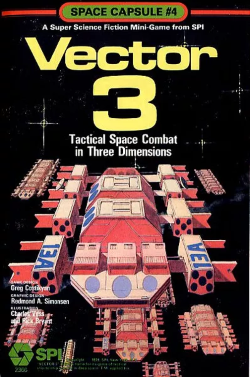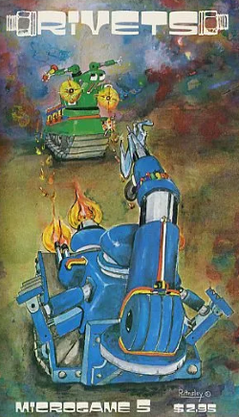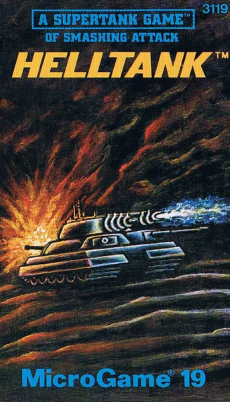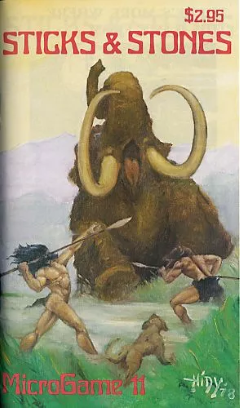
Hitler's War is a strategic level World War II war game for 2 or 3 players, first published by Metagaming Concepts in 1981, and then by Avalon Hill in 1984.

Stellar Conquest is a science fiction board game designed by Howard M. Thompson that was published in 1974. It is a prototype of the 4X strategy game genre.

Golan subtitled "Syrian-Israeli Combat in the '73 War", is a board wargame published by Simulations Publications, Inc. (SPI) in 1975 that simulates operational level ground combat between Egypt and Israel on the Golan Heights during the just completed Yom Kippur War of October 1973. Golan was originally published as part of the "quadrigame" Modern Battles: Four Contemporary Conflicts.

Melee is a board wargame designed by Steve Jackson, and released in 1977 by Metagaming Concepts. In 2019, Melee was revived and re-released by Steve Jackson Games.

Chitin: I is a science fiction microgame published by Metagaming Concepts in 1977 in which bands of intelligent insects vie for resources.

StarGate is a science fiction board game published by Simulations Publications, Inc. (SPI) in 1979 in which players wage combat via spaceships.

Annihilator & One World are two board wargames released in one package by Metagaming Concepts in 1979 as the 14th addition to its MicroGame line.

Hot Spot is a science fiction board wargame published by Metagaming Concepts in 1979 that simulates the battle for possession of a molten planet.

Vector 3 is a science fiction combat microgame published by Simulations Publications, Inc. (SPI) in 1979.

Rommel's Panzers is a board wargame published by Metagaming Concepts in 1980 that simulates combat in North Africa in 1941.

Holy War is a science fiction board wargame published by Metagaming Concepts in 1979 in which two groups battle each other inside a pocket universe.

Ice War is a board wargame published by Metagaming Concepts in 1978 that hypothesizes a Eurasian attack against American oilfields in Alaska.

Olympica, subtitled "The U.N. Raid on Mars, 2206 A.D.", is a science fiction microgame published by Metagaming Concepts in 1978.

Invasion of the Air-eaters is a science fiction near-future board wargame published by Metagaming Concepts in 1979 in which aliens invaders attempt to replace the oxygen in Earth's atmosphere with sulfur dioxide.

Rivets is a post-apocalyptic board wargame published by Metagaming Concepts in 1977.

Dimension Demons is a science fiction board wargame published by Metagaming Concepts in 1981 as part of its MicroGame line.

Helltank is a science fiction board wargame published by Metagaming Concepts in 1981 as part of its MicroGame line. The game simulates combat in the future between a supertank and more conventional forces.

Helltank Destroyer is a science fiction board wargame published by Metagaming Concepts in 1982 as part of its MicroGame line that features combat between supertanks and other futuristic weapoons systems. The game is a sequel to 1981's Helltank, which is itself based on Ogre.

Kriegsmarine is a board wargame published by Simulations Canada (SimCan) in 1980 that is a simulation of tactical naval comabt in the Atlantic and Mediterranean during World War II.

Sticks & Stones is a board wargame published by Metagaming Concepts in 1978 that is set in the Neolithic Age.




















